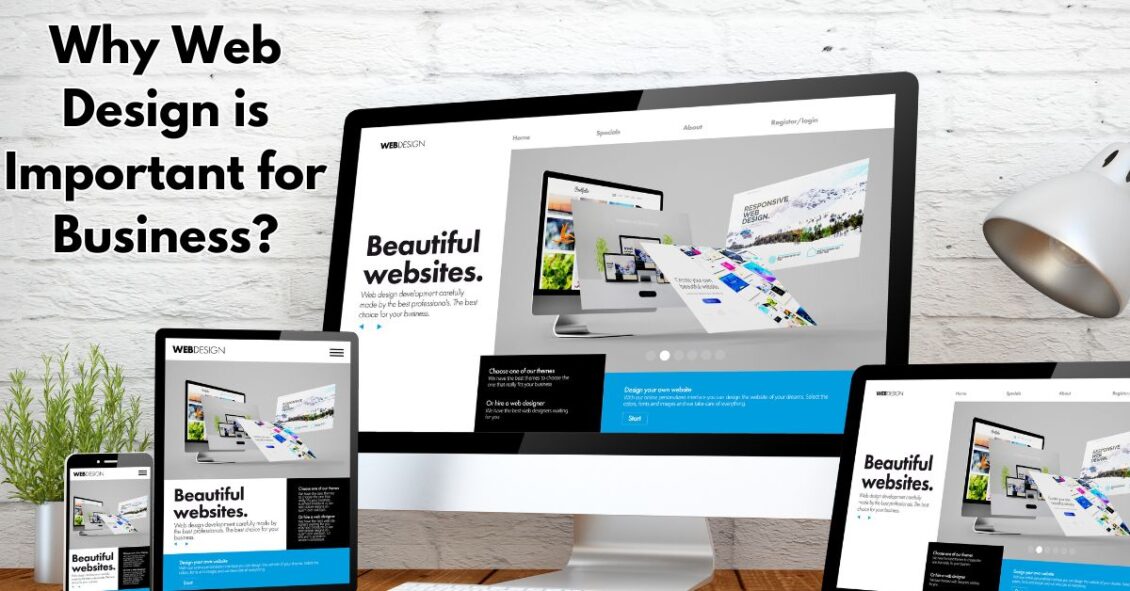In today’s digital world, a strong online presence is crucial for businesses to thrive. As more consumers turn to the Internet to search for products and services, the importance of web design cannot be understated. A well-designed website not only attracts visitors but also attracts them and converts them into customers. In this article, we will explore numerous reasons why web design is essential for business success.
First Impressions Matter
In the competitive Internet landscape, first impressions are everything. Your website acts as the digital face of your business and is the first point of contact with potential customers. Just as a well-designed storefront can attract passers-by, a visually appealing website can captivate online visitors.
User Experience (UX) and Navigation
A seamless user experience is critical to keeping visitors on your website. From intuitive navigation to fast loading times, every aspect of the user journey matters. Responsive design ensures that your site looks and functions seamlessly on a variety of devices, increasing user satisfaction and encouraging repeat visits.
Brand Identity and Credibility
Your website is a reflection of your brand identity and values. Consistent brand elements such as colors, fonts, and images help build trust and credibility with your audience. A professionally designed website instills confidence in potential customers, indicating that you are a reputable and trustworthy company.
SEO and Web Design
Effective web design goes hand in hand with search engine optimization (SEO). By optimizing design elements like meta tags, headers, and site structure, you can improve your website’s visibility in search engine results. Mobile optimization is essential given the growing number of users accessing the web via smartphones and tablets.
Competitive Advantage
Great web design can set you apart from the competition in a crowded market. A visually stunning and easy-to-use website creates a memorable impression, making visitors choose your business over others. Investing in quality design demonstrates your commitment to excellence and professionalism.
Conversion Rate Optimization (CRO)
Conversion rate optimization focuses on increasing the percentage of website visitors who take a desired action, such as making a purchase or subscribing to a newsletter. Strategic design elements such as compelling calls to action and intuitive forms can significantly impact conversion rates and ultimately drive business growth.
Scalability and Adaptability
As your business grows, your website must be able to scale and adapt accordingly. Flexible design ensures that your site can adapt to growth and technological changes. By future-proofing your website, you can avoid costly redesigns in the future and maintain a competitive advantage in the long run.
Cost-Effectiveness and ROI
Investing in quality web design may require an initial investment, but the long-term benefits far outweigh the costs. A well-designed website generates a higher return on investment (ROI) through user engagement, conversions, and customer satisfaction. By prioritizing design excellence, you can achieve sustainable business growth.
Customer Engagement and Interaction
Interactive elements like live chat support, feedback forms, and social media integration encourage more interaction with your audience. By providing avenues for interaction, you can build meaningful relationships with customers and build brand loyalty. A well-designed website becomes a hub for community engagement and interaction.
Analytics and Data-Driven Design
Data-driven design involves leveraging analytical tools to gain insights into user behavior and preferences. By analyzing metrics like bounce rate, time on page, and conversion funnel, you can identify areas for improvement and refine your website design accordingly. A/B testing allows you to experiment with different design elements to optimize performance.
Adaptation to Market Trends
The digital landscape is constantly evolving and new design trends and techniques emerge from time to time. By staying informed about market trends and user preferences, you can ensure that your website remains relevant and competitive. Incorporating user feedback and monitoring industry developments allows you to proactively adapt your design strategy.
Security and Trust
In an era of increasing cybersecurity threats, website security is paramount. Implementing strong security measures, such as SSL certificates and encryption protocols, builds trust among your customers. By prioritizing security, you create a secure online environment to conduct transactions and protect sensitive data.
Accessibility for All Users
Accessibility should be a fundamental consideration in web design, making sure your website is usable by people of all skill levels. By following accessibility standards such as the Americans with Disabilities Act (ADA) and the Web Content Accessibility Guidelines (WCAG), you make your site inclusive and welcoming to everyone. Designing with accessibility in mind not only expands your potential audience but also reflects your commitment to diversity and inclusion.
Conclusion
In conclusion, web design plays an important role in the success of modern businesses. From creating a positive first impression to driving conversions and building customer loyalty, the impact of quality design cannot be underestimated. By prioritizing excellence in web design, companies can differentiate themselves in a competitive market, achieve a higher return on investment, and build lasting customer relationships.
FAQs
Why is responsive design important for websites?
Responsive design ensures that websites adapt seamlessly to different screen sizes and devices, providing a consistent user experience across platforms.
How does web design impact SEO?
Web design elements such as site structure, page speed, and mobile-friendliness directly influence search engine rankings, affecting visibility and organic traffic.
What are some common web design mistakes to avoid?
Common web design mistakes include cluttered layouts, slow loading times, inconsistent branding, and lack of clear navigation.
How often should I update my website’s design?
Website design should be periodically updated to reflect evolving trends, technological advancements, and changes in user preferences. Regular maintenance ensures that your site remains fresh, relevant, and competitive.
What role does user feedback play in web design?
User feedback provides valuable insights into the usability, functionality, and overall user experience of a website. Incorporating feedback allows businesses to address pain points, improve satisfaction, and enhance the effectiveness of their web design strategy.


